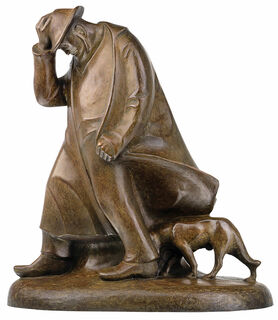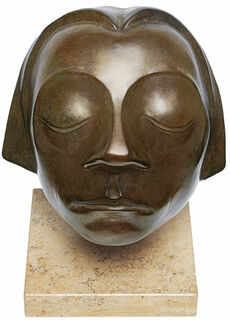
Ernst Barlach
1870-1938, sculptor, writer and draughtsman
Ernst Barlach was born on January 2, 1870, in Wedel, Germany, and died on October 24, 1938, in Rostock, Germany. He holds an outstandingly special position within German Expressionism. As a graphic artist, draughtsman, writer and, in particular, a sculptor, Barlach created milestones in art history. Barlach's sculptural works of art have a special effect because they seek extreme experience of limits and their representation. They are works of multi-layered meaning with which he foregrounded the essence of the human being and that what stands above the self and the world.
Barlach's intention is rooted in the depths, the inner self. Shaped by war and challenging living conditions, he experiences both suffering and happiness. The human being is always the focus of his work: Ecce homo.
"I desire nothing more than to be a good and true artist as best I can. I believe that what cannot be expressed through the work can pass into the possession of another through forms. My pleasure and creative impulse continually revolve around the problems of the meaning of life and the other great mountains in the spiritual realm." (Ernst Barlach)
Ernst Barlach became an honorary member of the Academy of Fine Arts, Munich, in 1925. In 1933, he was appointed Knight of the Peace Class of the Order "Pour le mérite". In 1937, the National Socialists removed his works from public collections and spaces for being "degenerate art". Ernst Barlach died in Rostock on October 24, 1938.
Today, Ernst Barlach's works are an integral part of leading museums and collections and - if available - fetch record amounts at auction.
"The Singing Man" became Ernst Barlach's best-known sculpture, an icon of Modernism. It adorns illustrated books and posters worldwide, and the original edition is a permanent part of the collections of the world's major museums, including the Museum of Modern Art (MoMA) in New York.
€2,052.00 €2,280.00
End of Year Sale -10%
€1,692.00 €1,880.00
End of Year Sale -10%

























